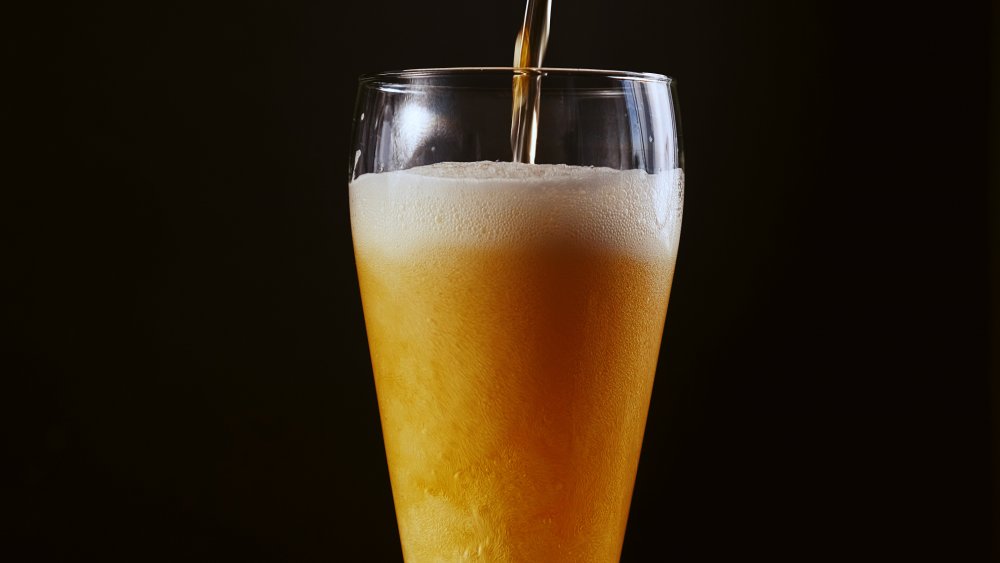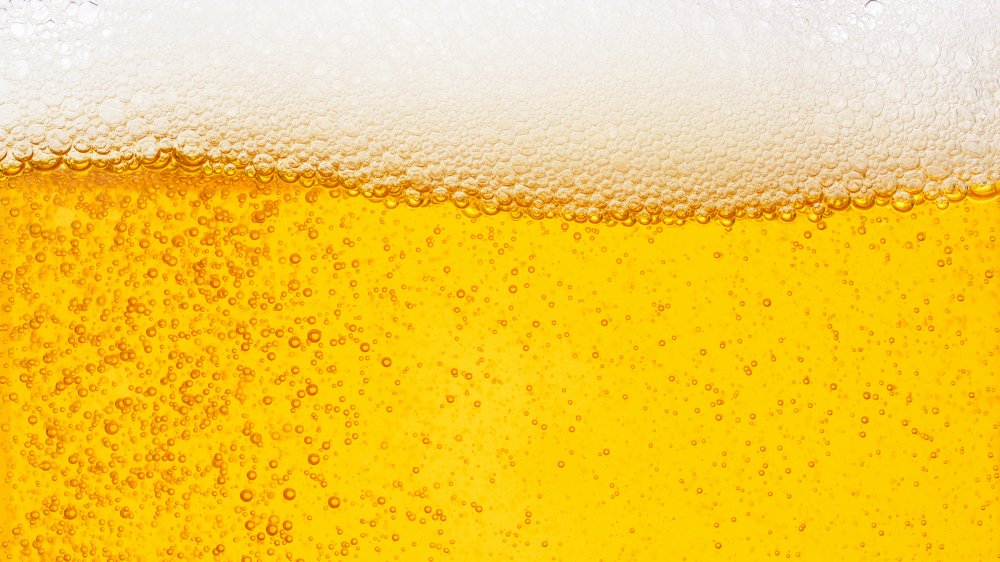The Ingredient You'd Be Surprised Is Inside The Beer You're Drinking
According to American Heritage, beer came to America via the Mayflower, and just as it was with our forefathers, the frothy cold brew continues to be the adult drink of choice, per a recent Gallup poll, where it beat out both wine and liquor. In 2018 alone, Americans drank an estimated 6.3 billion gallons of beer — or approximately 26.2 gallons per legally-able-to-drink adult. For a little more context, one gallon is equal to eight pints, which means in a year, an adult beer drinker consumes 209.6 pints of beer (via USA Today).
Beer is part of our culture. We drink it at sporting events, enjoy it at business happy hours, and guzzle it at barbeques and pool parties. Whether you are a fan of stouts or lagers, a craft or microbrew, or anything in between, chances are at some point you may have pondered what goes into the beer you are consuming, even if it might have only been for a fleeting moment.
While most people know about the more common ingredients you find in beer (yeast, hops, malt, water, and barley), many are not aware of a seemingly bizarre ingredient used to make your beer of choice. This ingredient may give you pause — again only for a fleeting second before you take a gulp, but still (via Thirsty Magazine). What is this odd ingredient in your beer?
Beer's surprising ingredient
The surprising ingredient that you might not realize is in your cold brew is isinglass. Are you scratching your head and asking what the heck is isinglass? Us, too. Isinglass is a gelatin-like substance that comes from a fish's swim bladder. Wait, from where? Yes, isinglass comes from sturgeon, or in many cases, tropical or subtropical fish.
But why? Isinglass is a fining which helps clarify the yeast from beer. The collagen in isinglass has special properties that help to quickly settle yeast and beer proteins, the result of which is clear beer. No one knows exactly how this was discovered, but as the fish tale goes, a clever fisherman decided to try and store his beer in a swim bladder. The beer interacted with the isinglass in the swim bladder and the observant fisherman realized upon pouring it that his beer was much clearer in color. Seems like a good tale.
But don't let the thought of isinglass freak you out too much or deter you from kicking back and enjoying your brewskies. The use of isinglass has declined over the years with the modernization of filtration and centrifugation processes, and this weird ingredient is usually only used in cask ales and in some American craft brewers (via Beer and Brewing).

